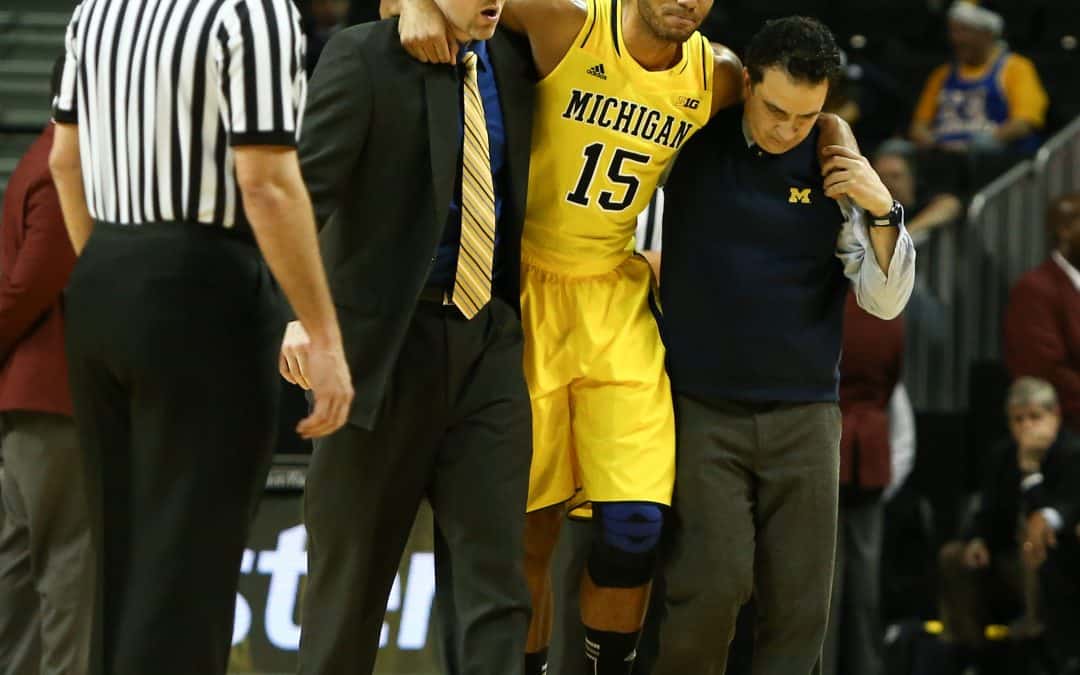Fast-paced and with frequent and aggressive bodily contacts, Basketball injuries can and do occur, and can be especially rough on your knees. Injuries are most commonly caused by falls, player contact, awkward landings and knee-jerk changes in direction, so it is important to understand how injuries can be treated, as well as prevention techniques so you can safely prolong your basketball career.
What types of injuries are the most common in Basketball?
As Basketball requires extensive stop and go and cutting maneuvers, a player’s legs are frequently dealt blows which can put the ankles and knees as risk. The most common injuries are:
- Knee Injuries
- Ankle Sprains
- Jammed Fingers
- Deep Thigh Bruising
- Facial Cuts
- Foot Fractures
However it is injuries to your knees that are most common in basketball.
Knee tears
Knee tears can be devastating to a person’s basketball career and account for the most time lost in training and games. An injury to the knee’s Medial Collateral Ligament (MCL) is most common following a blow to the outside of the knee and can often be treated with ice, bracing and a gradual return to activity. However it is an injury to the knee’s Anterior Cruciate Ligament (ACL) that is a more serious ligament tear that is often a season-ending injury that may require corrective surgery. It is important to note that females are two to 10 times more likely to suffer and ACL injury than males.
How do I know I may have an ACL tear?
Many people hear or feel a “pop” in the knee when an ACL injury occurs. Your knee may swell within 24 hours of the injury, have a feeling of looseness or a sensation that the knee is unstable and becomes too painful to bear weight.
Depending on the severity of the ACL injury, you may or may not require surgery. Non-surgical treatment can include rehabilitation exercises, a change in physical activity and wearing a knee brace. For sports such as Basketball that require a lot of running, jumping, twisting and turning, surgery is the the most likely avenue of treatment. Surgical treatment creates a new ACL from a tendon in your knee. Overall, surgery is about 90% successful in restoring knee stability and people tend to return to their sport about 12 months after surgery.
Tips on injury prevention and preparation
- ACL injury prevention programs use neuromuscular training to improve running, jumping and landing techniques. Talk with your coach and/or athletic trainer about an ACL injury prevention program and incorporating the training principles into team warm-ups.
- After a period of inactivity, it is wise to progress gradually back to full-contact basketball through activities such as aerobic conditioning, strength training, and agility training.
- Wear the right equipment, and consider using a knee brace. Proper shoes and mouth guards are important for basketball players to avoid unnecessary injuries.
Knee Specialist in Perth
To get you back on your feet and playing again look no further than Dr Jens Buelow’s specialist support. Dr Buelow is an orthopaedic surgeon with specialist training in arthroscopic knee and shoulder surgery, and a specialist in ACL reconstructions on sports players and patients. Contact Dr Buelow’s office to book a consultation.

